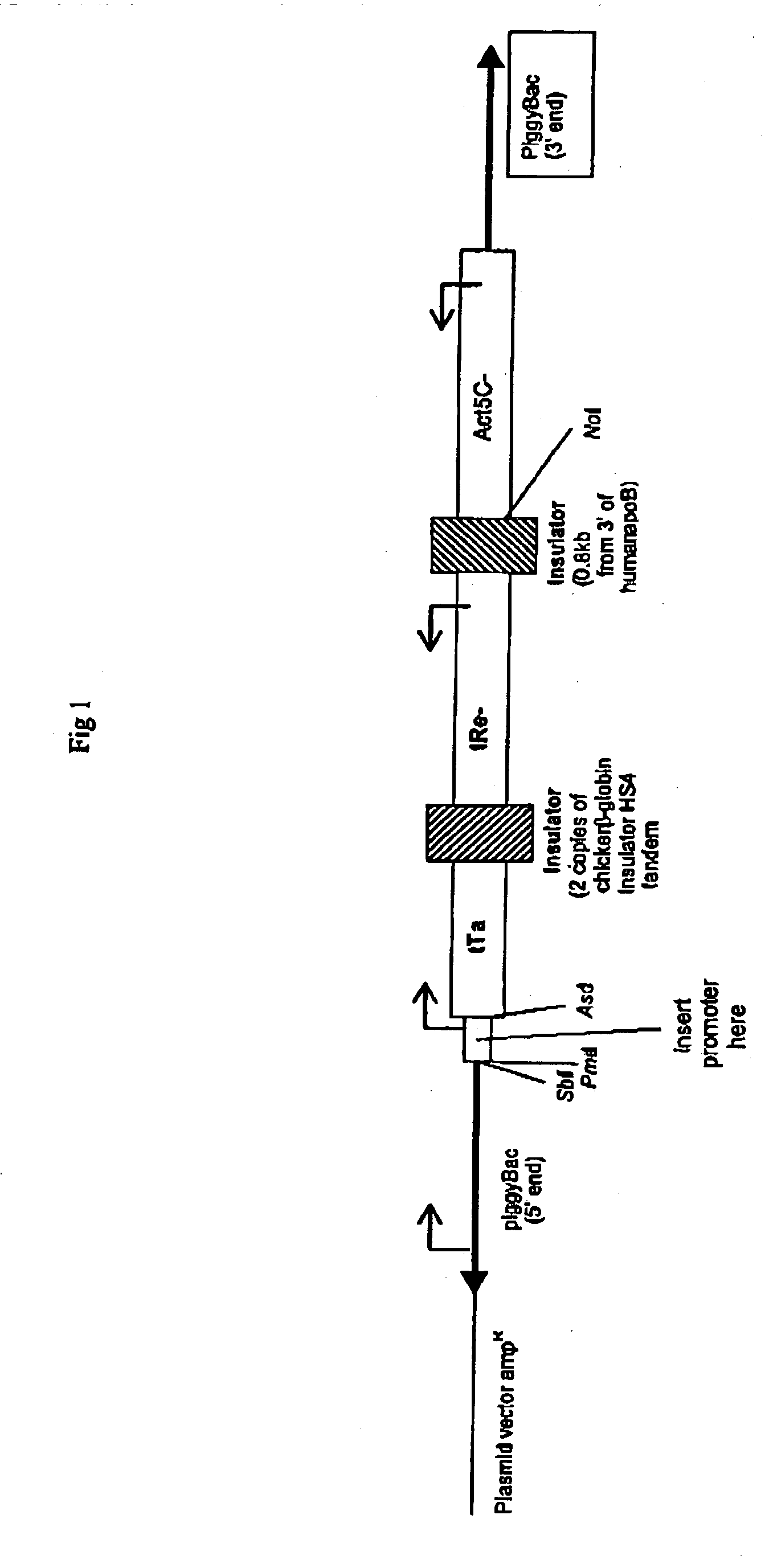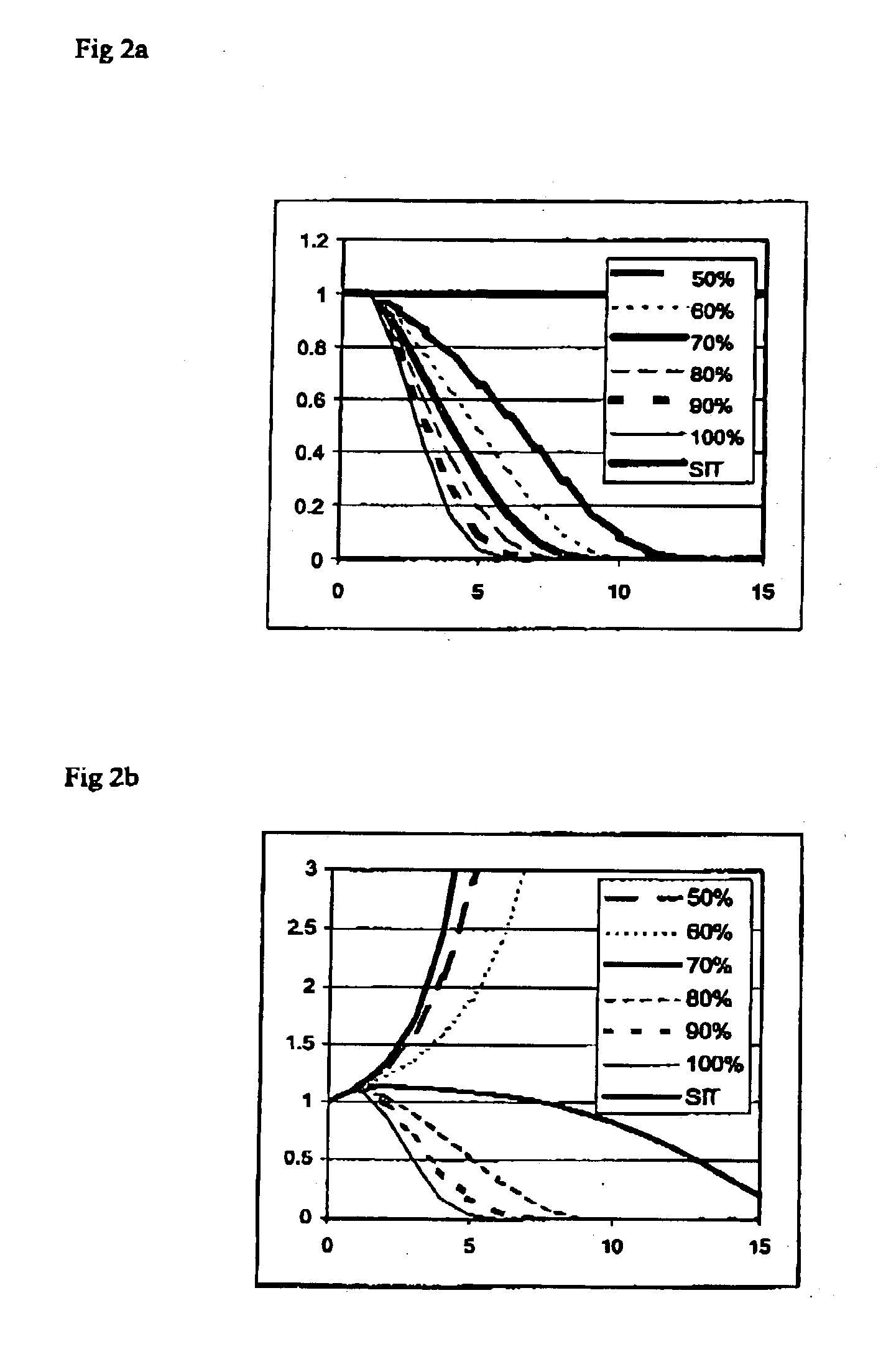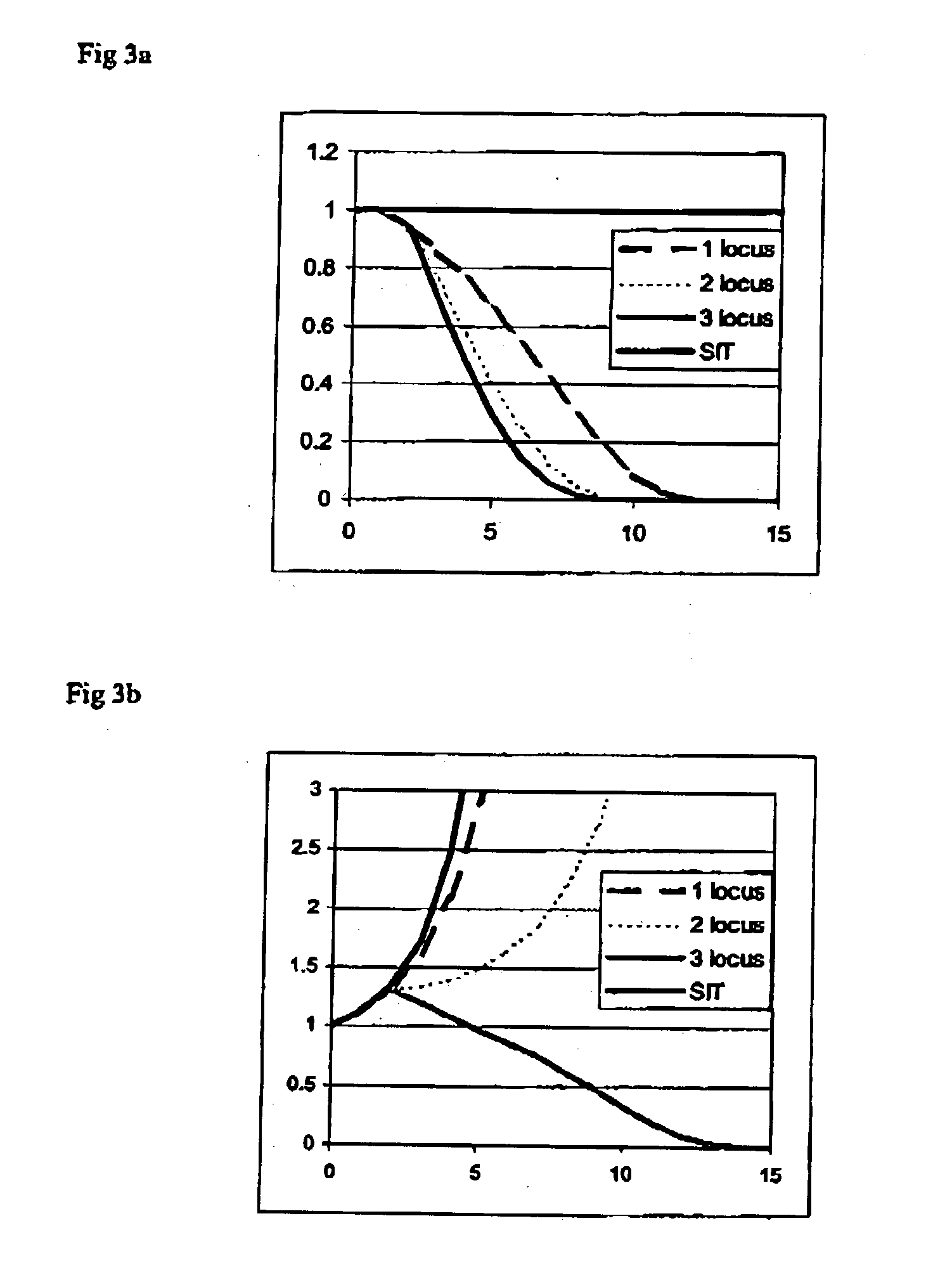Biological control
a technology of biological control and biological apparatus, applied in the field of biological control, can solve the problems of reducing the fitness of the resultant stock with respect, reducing the size of the next generation, and unable to reliably yield a truly single-sex population
- Summary
- Abstract
- Description
- Claims
- Application Information
AI Technical Summary
Benefits of technology
Problems solved by technology
Method used
Image
Examples
example 1
[0173] Single Chromosome Crossos
[0174] In "single chromosome crosses" at 25.degree. C., ten to fifteen virgin females homozygous for the tTA construct and five to ten young males homozygous for the tRe construct were placed on food containing or lacking a tetracycline supplement. Their progeny were allowed to develop on this food.
1 Tetracycline conc. .mu.g / ml Female Total Male Total 0 0.sup.A, 0.sup.B, 0.sup.C, 0.sup.F, 0, 0, 0, 0 0 58, 47, 60, 51, 46, 60, 52, 54 428 0.1 46, 49, 50, 51, 52, 50, 41, 40 379 56, 42, 72, 41, 56, 72, 61, 34 434 1 52, 40, 60, 0, 60, 72, 50, 52 386 50, 51, 55, 3, 63, 54, 57, 56 389 5 41, 55, 49, 52, 48, 47, 40, 51 383 36, 47, 42, 55, 36, 55, 52, 52 375 Sxlpe tTa.sup.(A,B,C,F) .times. tRe Ras64B.sup.V12(B,C)
[0175] Sxl.sup.pe
[0176] Format for data: the 8 numbers are the results from crosses using independent insertions of each element (to control for position effect). Here, 4 insertions of Sxl.sup.pe-tTA (A, B, C, and F) were used and two of tRE-Ras 64B.sup....
example 2
[0192] Reporter Crosses
[0193] In "reporter crosses" at 25.degree. C., females homozygous carrying an insertion of Sxlp.sup.e tTa on their X chromosome (Sxlp.sup.e tTa.sup.(A)) were crossed to males carrying various reporter constructs. As with "single chromosome crosses", ten to fifteen virgin females homozygous for the tTA construct and five to ten young males homozygous for the tRe construct were placed on food containing or lacking a tetracycline supplement. Their progeny were allowed to develop on this food.
[0194] lacZ
[0195] Embryos were stained for IacZ using a standard histochemical method.
16 Tetracycline conc. .mu.g / ml LacZ positive Total LacZ negative Total 0 60, 85, 99, 60 304 78, 89, 85, 93 345 0.1 0, 0, 0, 0 0 176, 174, 178, 181 709 1 0, 0, 0, 0 0 188, 190, 181, 180 739 5 0, 0, 0, 0 0 156, 151, 159, 185 651 (Female) Sxlp.sup.e tTa.sup.(A) .times. tRe lacZ.sup.(III) (Male)
[0196]
17 Tetracycline conc. .mu.g / ml LacZ positive Total LacZ negative Total 0 57, 82, 97, 45 281 61, ...
example 3
[0205] Recombinant Chromesome Experiments
[0206] 40-50 young females and 20-25 young males raised at 25.degree. C. upon food with the indicated tetracycline supplement were allowed to mate, then transferred to normal (tetracycline-free) food after 3-4 days. These flies were transferred to fresh vials of normal food every day for 12 days, then moved on the 13th day. All the vials were incubated at 25.degree. C. while the progeny developed. The numbers of male and female progeny emerging as adults in each vial were recorded.
Tetracycline Concentration
[0207]
22 Sxl.sup.pe Tet. Conc. Day 1 Fe-Day 2 Day 3 Fe- Day 4 Day 5 Day 6 Day 7 .mu.g / ml Male male Male Female Male male Male Female Male Female Male Female Male Female 0.1 103 0 98 0 89 0 92 0 105 0 95 0 110 0 1 128 0 137 0 150 0 136 0 111 0 87 0 100 0 5 110 0 111 0 95 0 90 0 144 0 93 0 138 0 20 131 0 126 0 133 0 120 0 93 0 99 0 111 0 100 139 0 127 0 145 0 110 0 149 0 128 0 94 0 500 95 11 133 12 145 1 137 1 86 0 112 0 128 0 1000 140 12 133...
PUM
| Property | Measurement | Unit |
|---|---|---|
| Fraction | aaaaa | aaaaa |
| Temperature | aaaaa | aaaaa |
| Volume | aaaaa | aaaaa |
Abstract
Description
Claims
Application Information
 Login to View More
Login to View More - R&D
- Intellectual Property
- Life Sciences
- Materials
- Tech Scout
- Unparalleled Data Quality
- Higher Quality Content
- 60% Fewer Hallucinations
Browse by: Latest US Patents, China's latest patents, Technical Efficacy Thesaurus, Application Domain, Technology Topic, Popular Technical Reports.
© 2025 PatSnap. All rights reserved.Legal|Privacy policy|Modern Slavery Act Transparency Statement|Sitemap|About US| Contact US: help@patsnap.com



